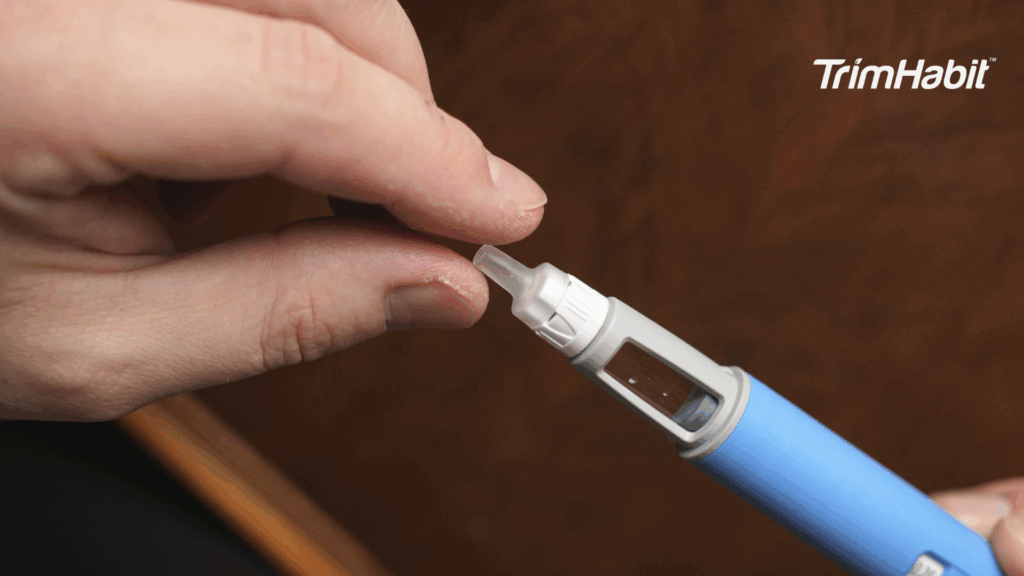In an age where fad diets and body image pressure dominate the social scene, many individuals are consistently searching for a method that truly works. Among the most popular is intermittent fasting, which is known to be effective for weight loss without the need for strict calorie counting or elaborate meal plans.
While some people quickly experience these weight loss benefits, others may not see the same results. However, intermittent fasting offers more than just weight loss; it can lead to additional health benefits beyond managing body weight.
Let’s look into intermittent fasting success metrics beyond the scale. With this information, you will hopefully get to recognize its broader benefits while continuing to monitor your body weight progress.
Understanding Intermittent Fasting
What is Intermittent Fasting?
Intermittent fasting (IF) alternates between periods of fasting and eating and is popular in the health and fitness community. It doesn’t specify what to eat, just when to eat. IF involves fasting for specific lengths of time, usually 12 hours or more, making it an eating pattern rather than a diet.
How does it work?
When you consume food, especially carbohydrates, your body converts them into glucose for immediate use. Any excess glucose is stored in the liver as glycogen.
During fasting periods, once the available glucose is used up, your body breaks down stored glycogen into glucose for energy, a process called glycogenolysis1.
If you extend your fast beyond 16 hours, your body starts using fat stores for energy. This switch from glucose to fat as the primary fuel can lead to significant weight loss over time with regular practice.
Benefits of Intermittent Fasting for Weight Loss and Overall Health
Intermittent fasting can lead to significant weight loss, improved body composition, and a reduced risk of chronic diseases.
Intermittent fasting aids weight loss by reducing insulin resistance, which helps manage blood sugar levels and protects against type 2 diabetes. Another benefit of IF is that it lowers markers of inflammation, a key driver of many chronic diseases. Additionally, studies in rats show that fasting increases the brain hormone BDNF, potentially aiding the growth of new nerve cells and improving brain health2,3.
The Limitations Of The Scale
Relying solely on weight loss is not enough to measure progress accurately. Weight does not account for changes in body composition, such as muscle gain or fat loss. Muscle gain and water retention can both affect weight loss results, often giving a misleading picture.
This is why scales don’t tell the whole story. They don’t measure body fat percentage, muscle mass, or overall body composition. Scales can be influenced by factors like body water, fat, and lean tissue4.
To get a complete picture of your health and progress, it’s important to consider other metrics. These include body measurements, body fat percentage, and fitness improvements.
Tracking how your clothes fit and your energy levels can also provide valuable insights. By looking beyond the scale, you can get a better and more complete picture of your health.
Intermittent Fasting Success Metrics Beyond The Scale
Measuring your progress in your intermittent fasting journey involves more than just the numbers you see on the scale. While weight is a common metric, other indicators can provide a fuller picture of how well your fasting routine is working for you:
Energy Metrics
Observe whether your energy levels remain steady throughout the day or if you experience fewer energy crashes. Intermittent fasting helps regulate energy5, preventing mid-afternoon slumps and enhancing overall vitality.
If you notice a consistent improvement in your energy, it might indicate that your body is adjusting well to the fasting schedule. Higher energy levels can also lead to better productivity and improved health. Keep a journal of your daily energy levels to track any changes over time.
Digestive Health Metrics
Improvements in digestion are a key indicator of how well intermittent fasting is working for you. Intermittent fasting positively affects gut health by increasing the diversity of beneficial bacteria. This leads to more production of butyric acid, which supports gut function and metabolism6.
If you find that your digestive issues decrease and your bowel movements become more regular, it could signify that your fasting routine is benefiting your gut health. Pay attention to any changes in appetite and hunger cues, as these can also reflect improvements in digestion. Keeping track of these changes can help you understand how intermittent fasting affects your digestive system.
Sleep Quality Metrics
Better sleep quality can be an important sign of intermittent fasting’s positive impact on your health7. You might notice that you fall asleep more easily, stay asleep longer, or wake up feeling more refreshed.
Improved sleep can result from more stable blood sugar levels and reduced nighttime hunger. Monitoring your sleep patterns and how rested you feel each morning can help you assess this aspect of your fasting regimen. Better sleep quality can lead to improved recovery, mood, and health.
Physical Performance Metrics
Track any changes in your physical performance during workouts or daily activities. You might experience increased strength, endurance, or improved recovery times as your body adapts to intermittent fasting8,9.
Enhanced performance can be a sign that your body is efficiently utilizing energy and adapting to your new eating patterns. Keep a log of your exercise routines and performance metrics to observe any progress. Improved physical performance can boost motivation and contribute to fitness goals.
Mood and Emotional Metrics
Notice any shifts in your mood or emotional stability as you continue with intermittent fasting. Some people experience a more balanced mood and reduced stress levels10,11, which can be attributed to stable blood sugar levels and improved health.
Tracking changes in mood can help you understand how fasting influences your emotional well-being. If you find yourself feeling more positive or experiencing fewer mood swings, it may indicate that the fasting routine is benefiting your mental health. Keeping a mood journal can help you identify patterns and improvements over time.
Body Measurement Metrics
Regularly measuring areas like your waist, hips, and chest can provide additional insights into body composition changes beyond losing weight and beyond what the scale shows. You might notice a reduction in measurements, indicating fat loss or changes in muscle mass.
Body measurements can be particularly useful for tracking progress when weight loss is slow or plateaus. Taking consistent measurements at the same time of day and under similar conditions will give you the most accurate picture of your progress. This method can help you see physical changes that the scale alone might not reveal.
Clothing Fit Metrics
Pay attention to how your clothes fit as you progress with intermittent fasting. Changes in how your clothing feels or fits can be a practical indicator of body composition changes.
You might notice that your clothes become looser or fit differently as you lose fat and gain muscle. This can be a more tangible and immediate sign of progress than weight alone. Regularly trying on different outfits or noting any changes in fit can help you track your transformation and stay motivated.
Succeeding With Intermittent Fasting
There is no shortcut or guarantee for success, even with intermittent fasting. Achieving positive results requires multiple actions and commitment. To maximize your chances of success, combine these steps and practices consistently:
Creating a Sustainable Fasting Schedule
- Find a fasting schedule that fits your lifestyle and is sustainable in the long term. Popular options include the 16/8 method or the 5:2 approach.
- Adjust your fasting and eating windows based on your daily routine and personal preferences. Flexibility can help you stick with the plan over time.
Tips for the First Two Weeks of Intermittent Fasting
- Start with a 12-hour fast and gradually increase the duration as you get more comfortable. This gradual approach helps your body adjust without feeling overwhelmed.
- Stay hydrated and listen to your body during the fasting period. Drinking water, herbal teas, and other non-caloric beverages can help curb hunger and keep you hydrated.
Losing Weight Effectively with Intermittent Fasting
- Eat fewer calories and focus on nutrient-dense foods to lose weight effectively with intermittent fasting. Consume plenty of vegetables, lean proteins, and healthy fats in your meals.
- Avoid highly processed foods and sugars, which can spike your blood sugar and lead to cravings. Opt for whole foods to maintain stable energy levels.
Dealing with Hunger and Cravings
- Distract yourself with activities during fasting periods to manage hunger and cravings. Engage in hobbies, exercise, or other activities to keep your mind off food.
- Incorporate high-fiber foods and healthy fats into your meals to help you feel fuller longer. These can help reduce the frequency and intensity of hunger pangs.
Monitoring Your Health
- Regularly check in with your body to ensure you are feeling well and maintaining your health. Look for signs of fatigue, irritability, or other negative symptoms.
- Consult with a healthcare professional if you have any underlying health conditions or concerns. They can provide personalized advice and support for your fasting journey.
Staying Motivated and Consistent
- Set clear goals and track your progress to stay motivated. Celebrating small victories can keep you inspired and committed.
- Join a community or find a fasting buddy for support and accountability. Sharing your journey with others can make the experience more enjoyable and sustainable.
Incorporating Exercise Into Your Routine
- Choose the right type of exercise that complements your fasting schedule. Light to moderate activities like walking, yoga, or strength training can be effective.
- Pay attention to how your body responds to exercise during fasting and adjust as needed. Some people may prefer to work out during their eating window for optimal energy.
Adapting to Changes and Setbacks
- Be flexible and adapt your fasting routine as needed. Life events, travel, or other factors may require temporary adjustments to your schedule.
- Don’t be discouraged by setbacks or deviations from your plan. Reflect on what caused the setback and use it as a learning experience to improve.
Final Thoughts
To know if intermittent fasting is working for you, track your progress using a combination of metrics. Celebrate small wins along the way and stay consistent. Tracking more than just your weight can help you stay motivated and focused on your health journey. Using various ways to measure success gives you a better overall view of your progress and keeps you encouraged.









